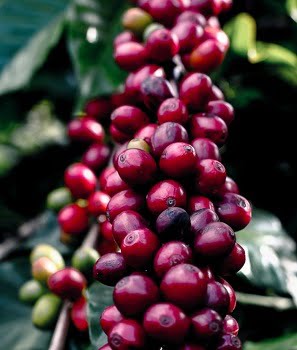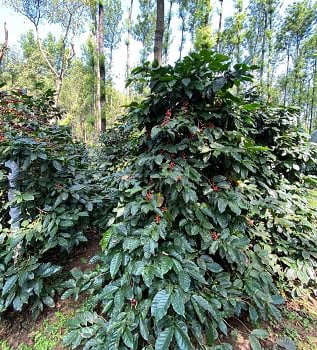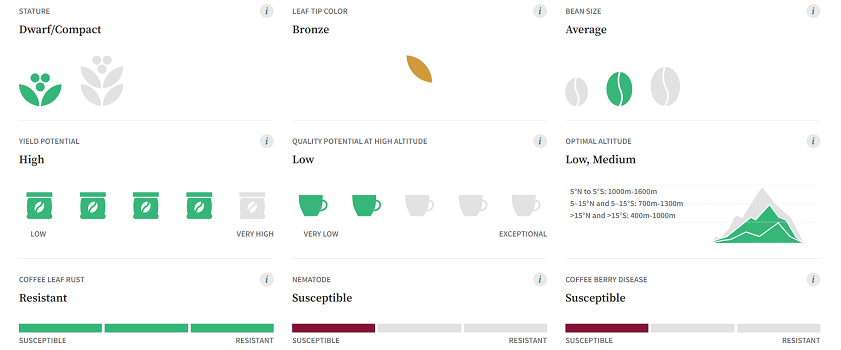Hailed as a valuable cultivar in the battle against coffee leaf rust, the high-yielding Catimor variety also carries a stigma for producing an inferior cup.
Catimor Coffee Cultivar was bred by crossing hearty, disease-resistant Timor plants with high-quality but susceptible Arabica-Bourbon varietal Caturra. The result is a rugged, compact bush that pumps out bountiful, rust-resistant cherries.
Not all Catimors deserve disdain! Diversity within this broad family means certain genetic lines offer both ample harvests and complexity in the cup.

What is Catimor Coffee Variety?
Catimor is an interesting coffee hybrid that was created in labs to combine the best traits of Arabica and Robusta coffee plants. The original Catimor cultivar was a cross between an Arabica variety called Caturra and a Robusta hybrid called Timor.
Timor Hybrid is a natural cross between Coffea Arabica and Canephora (Robusta) plants that appeared on the island of Timor in the 1920s.
Caturra is a natural mutation of Bourbon Arabica, known for dwarf structures, fair cup quality, and higher yields.
Catimor has a compact and dwarf structure from Caturra, resulting in higher yields, and genetic resistance against leaf rust from its Timor parent.
There are many sub-varieties of Catimor like T8667, Oro Azteca, Costa Rica 95, and Anacafe 14 that have been further developed for specific regions.

What is the History of Catimor Coffee?
Catimor Coffee’s origins trace back to Portugal in 1959 when scientists developed the initial variety as a response to prevalent diseases in the mid-20th century.
Catimor was initially introduced to Brazil in 1967 but didn’t take off well there. The variety struggled to produce good cup quality in Brazil’s soil and climate.
But later on, Catimor found success in Southeast Asian countries like Indonesia and Vietnam.
Especially in Vietnam, Catimor produces better cup quality compared to traditional Robusta varieties.
Recently, it is also undergoing testing and cultivation in the Yunnan province of China.

What are The Characteristics of Catimor Coffee?
Catimor plants are extremely hardy and high-yielding, As you’d expect from a variety bred for disease resistance. They have a compact, dwarf structure with bronze-colored leaf tips. The cherries are medium-sized. The large leaves form a protective canopy around the branches and trunk.

A downside is that Catimor trees have a shorter productive lifespan – they typically start dropping off in yield after around 10 years.
They do best at lower altitudes from 500-1500 meters and in higher rainfall.
Since Catimor contains Robusta genetics, it has a higher protein content. When grown outside optimal conditions, this can lead to a more vegetal, astringent taste.
The cup profile is not as refined as high-end Arabica, but still much better than traditional Robusta.
Catimor basically offers resilience and productivity at the cost of longevity and ultimate cup quality.
But for growers at lower altitudes or facing significant diseases, it can be a valuable option to maintain healthy yields and income.
“Catimor coffee grown in Son La province has good quality and it’s a pride of the locality,” and the coffee farming helped local people improve incomes and living standards in the last few years.
vietnamplus
What does Catimor Coffee Taste like?
The taste and cup quality of Catimor coffee can vary quite a bit depending on the growing conditions and subvariety.
When grown well, Catimor can actually produce a pleasantly sweet and crisp cup. The flavor is often described as nutty and herbal, with bright, fruity acidity. In fact, some Catimor can taste very close to a nice Bourbon. However, the Robusta genetics typically come through in the form of a bigger, bolder body and some more rubbery, woody, or earthy notes.
It doesn’t have the complexity and refined flavor of the best Arabica, but it is still much better than ordinary commodity Robusta coffee.
I’ve tried some Vietnamese Catimor that was quite nice – it had a brighter and fruitier profile. There were still some mild woody and astringent tones, so it wasn’t my favorite, but it was a nice exotic experience and worth a try.
More work is being done to breed Catimor strains that can produce even better cup quality. So while it may never match the very best Arabicas, Catimor has the potential to offer a tasty cup when grown in optimal conditions.
Discover Guides on other Coffee beans
- Excelsa Coffee Beans
- Geisha Coffee Beans
- Liberica Coffee Beans
- Typica Coffee Beans
- Pacamara Coffee Beans
Final Thoughts
And that’s a wrap on demystifying Catimor coffee!
While it may not be the most glamorous or refined coffee, Catimor has become a lifeline for many farmers battling pests and diseases and actually delivers a fair cup quality when grown in the right conditions.
Let me know in the comments if you’ve tried Catimor before – I’d love to hear about your experience tasting it.
Check out a guide on different types of coffee beans




my daily drinking coffee is a shade grown Japanese eco certified catimor from Oriberry in Hanoi. produces a very nice cup.
Shade grown Catimor never disappoints